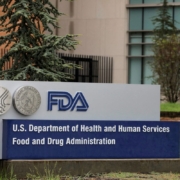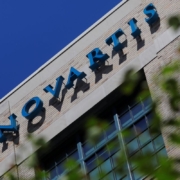Ensuring regional regulatory compliance: managing global information and submissions throughout the product lifecycle
Ensuring regional regulatory compliance: managing global information and submissions throughout the product lifecycle
By Michael Kardas
From the beginning of a product’s development until it is retired from the market, its lifecycle is influenced and driven by industry regulatory requirements, both at the global and local level. It is critical that, across this span of time – which could be decades – the manufacturer and/or sponsor is proactive in regulatory compliance submissions. The reasoning for this is simple: Regulators are the industry overseers at every point of the product lifecycle. Thus, it is vital that, from the beginning of a medicine’s development, a regulatory strategy is built into all activities so companies may optimize value, control costs and reduce risks – all while ensuring proper compliance. If any step is missed along the way, lifescience companies will encounter roadblocks in the form of delays on approval cycles and lack of proper data control, which can impact the long-term revenue for the medicine.
Proactive regulatory planning will ensure that as medicines are brought to market, data is captured, stored and shared throughout the firm for safety and efficacy filings in all geographic regions of distribution. Each stage of the medical product lifecycle has unique regulatory considerations that must be baked into overall strategy. These information requirements become more important as a product ages and firms face additional pressure to shrink costs and grow revenue. Rather than running into issues, the proactive regulatory planning process allows for opportunities to maximize revenue and minimize cost.
Launching of a New Solution
Obviously, the launch of a new medicine or product will garner a lot of attention from the market and regulatory bodies. But proactively planning for regulatory submissions should start well in advance when the solution is in the clinical development stage. Lifescience firms must look at local markets in which the solution will be initially introduced to grasp the local regulatory requirements and understand what data is needed for the submission. If the correct information is not gathered throughout the trial process or the right patient populations assessed, the initial application can be held up.
Rather, sponsors who want to optimize product launches should understand the data expectations of each regulatory authority or work with service providers in those areas who have that understanding. This can happen as early as two to three years prior to the initial application. Initially, an application is submitted that targets specific populations, markets and initial use cases or dosage forms. Due to this targeted nature, the initial launch regulatory submission will only represent a small percentage of the global market. Yet, this first application is one of the most important as it sets the stage for long-term commercial success of a product.
Updating labels, submissions and branding
Regulatory guidelines are not a static set of rules. Rather, these adapt to market needs and changes over time, requiring firms to resubmit and update product data along the way. Continued clinical development and testing alongside the capturing of real-world evidence is critical for submissions to secure ongoing approval under the new regulatory guidance and support overall long-term outcomes. This is especially true should the medicine be developed for the pediatric market, as this area is heavily monitored and undergoes frequent updates.
And with new regulatory guidance come changes to product labels and corresponding market authorization applications. Additionally, should companies opt to shift manufacturing processes, location of the product development or change any part of the supply chain – all of which are seen as a significant event by regulators – a new submission must be put forth to the local authority.
And, in the case of reviews, firms must provide solid proof as to why the change is happening – whether it is to accommodate supply chain issues to ensure greater reliability, how patient needs will be better met or other reasoning. Thus, when looking at changing processes to reduce costs or improve outcomes, companies that proactively build this layer of regulatory requirements into their strategy will be better positioned for success.
Additionally, rebranding a product is a huge regulatory milestone within the product lifecycle. For lifescience companies, a rebrand is about changing the pharmaceutical trajectory and revenue potential. For regulatory bodies, it is about capturing the right data related to safety and efficacy of the solution for its new treatment purpose. Regulatory planning must be considered in conjunction with the evolution of the solution, so all the right information is tracked and submitted within all forms.
Reaching the end of the lifecycle
Strategically, as a product loses market share or reaches patent expiration, sponsors have a significant decision to make. Should the product be withdrawn from the market, or if a firm is considering having the market authorization transferred to another firm, or is it considering offering a generic version? Regardless of the decision, regulatory submissions are the one constant that must pervade the entire product life cycle until it is fully removed from the market.
There are several factors that come into play at this time for each market in which the product is offered. Firms should consider the exclusivity period in all the markets where products are commercialized, the regulatory tools that are in place for lifecycle management and planning – research, patent extensions and supplemental protection certificates. All of these play a role in extending patient access and maximizing global revenue potential for a product.
Planning effectively for a complete lifecycle
Through effective regulatory planning from the start of a product’s development through its end of life, lifescience firms will have a more solid strategy surrounding how to bring new and innovative medicines to the market. Each step requires capturing and use of data and real-world evidence to maintain compliance across different geographies. In managing these complex and varying guidelines, it is recommended to work with a service provider in these regions to assist with research and provide the valuable knowledge on regulatory affairs so firms may make the right decisions.
About the author
Michael Kardas, Pharm.D., is VP and global head of the regulatory affairs and drug development team at IQVIA. Dr. Kardas has more than 20 years of experience in the biopharma industry and oversees a team that provides expert regulatory and drug development services to biopharmaceutical companies on the development of their asset. He earned his B.A. degree in biology from College of the Holy Cross and completed his doctor of pharmacy degree from the University of Connecticut.






 Reuters
Reuters


